a side blog for ATLA and occasionally LOK (icon by @cartoondot)
Don't wanna be here? Send us removal request.
Text
In All Directions at the Same Time - Chapter 3
At long, long last, chapter 3 is here!
0 notes
Text
In All Directions at the Same Time - Chapter 2
chapter 2 is up!
#atla fanfic#pacrim fancfic#atla pacific rim au#avatar: the last airbender#Avatar The Last Airbender#Pacific Rim#pacific rim au#my posts
0 notes
Text
In All Directions at the Same Time
Pacific Rim AU.
In 2017, twenty-two year old Aang is a critical asset to the Pan Pacific Defense Corps; he's the only person in the world who can solo-pilot Avatar, the semi-mythical Jaeger built to seal the Breach and end the Kaiju War. But when a tragic accident puts him in cryo-stasis, humanity is forced to adapt.
Fifty years later, Aang wakes up to a world reshaped by climate change, corporate greed, and half a century of war against interdimensional aliens. While his return is celebrated as the rebirth of the Avatar Project, and a renewed hope for humanity, Aang must navigate the conflict between his beliefs and his duties, while coping with the loss of his mentor Gyatso and finding his place in a world that is as foreign as it is familiar.
I just published the first chapter of my first fic ever! It’s an Aang-centric Pacific Rim AU, set in 2067. If you like ATLA/PacRim crossovers, or if you just want to read about the Gaang saving the world from giant amphibious aliens, check it out!
https://archiveofourown.org/works/32275852/chapters/79999177
#avatar: the last airbender#aang#aang-centric#atla#pacific rim#pacific rim au#pacrim#avatar the last airbender#atla pacific rim#atla pacific rim crossover#atla pacific rim au#my posts
5 notes
·
View notes
Text
Chapter 1 is finally here! (only like, two months late)
https://archiveofourown.org/works/32275852/chapters/79999177
So I’ve noticed that there’s been some renewed interest in ATLA/Pacific Rim crossovers lately and I just wanted to put it out there that I’m working on one such fic myself! It will not be centered on any particular romantic pairing but will include a few :)
I’ve been throwing ideas around for this fic since September (?!) of last year but I’m hoping to actually publish something by the end of April. When I do so I will make sure to post a link here so keep an eye on this space if that’s something you’d be interested in reading!
3 notes
·
View notes
Text
I'm surprised I haven't been asked this yet, but "boomeranga naami?" is how you would ask "Where is my boomerang?" in Inupiatun.
We don't have a word for boomerang, so we'd just use it as a loanword. The -ga is possessive, without anyone else indicates as the possessor so meaning "my" in this context. Naami means where in the sense of asking where something is.
188 notes
·
View notes
Note
*chinhands* Characterization. Your writing has always had the very, very well done characterization. How do you do it? What's your thought process/methods.
networks moving through networks.
there's a very good reason Person C's just shown up, and it's because I want to tell you something sneaky about Person B, who exists to tell you something very sneaky about Person A.
Because Person B and Person C are about to have an interaction that Person A is going to witness, and Person A is going to have all sorts of impressions to take away from that that tell you any number of things about all three of the people involved— depending on who Person A is, of course, which I don't have to tell you because I'm going to show you based on the things they think and feel when they watch however Persons B and C deal with each other.
I can make Person C a bully, and make Person B a person who knows how to disarm bullies, and Person A is someone who is utterly flabbergasted by the information that bullies can be disarmed. There. I’ve just told you something important.
I can make Person C someone Person B admires or respects very deeply, someone whom Person B consults and defers to as needed, whose role exists to demonstrate Person B's values and the way they order the universe, which gets filtered through Person A's own values and universal order. That’s very important.
I can make Person C warm and bubbly and effusive all to emphasize Person B's solidness and stoicness, and I can show Person A responding to this warmth and bubbliness in a way that illustrates how they relate to Person B's energy. Or vice versa— I can make Person C as cold as ice so Person B shows up all the warmer, so we’re relieved when Person B finally shows up in the story again. that’s huge. you can do an enormous amount with that.
and so on. using personalities and they energy they exude as something for your characters to react against, and for those reactions to tell the reader who they are. often the only reason a person in the story exists is because I want to show you exactly who this other person is and isn’t, and how this person feels about it. it’s strategic and it’s intentional and it’s fun.
94 notes
·
View notes
Text
My beta reader has some other things going on right now but I should be publishing the first chapter on AO3 this weekend!
So I’ve noticed that there’s been some renewed interest in ATLA/Pacific Rim crossovers lately and I just wanted to put it out there that I’m working on one such fic myself! It will not be centered on any particular romantic pairing but will include a few :)
I’ve been throwing ideas around for this fic since September (?!) of last year but I’m hoping to actually publish something by the end of April. When I do so I will make sure to post a link here so keep an eye on this space if that’s something you’d be interested in reading!
3 notes
·
View notes
Text
So I’ve noticed that there’s been some renewed interest in ATLA/Pacific Rim crossovers lately and I just wanted to put it out there that I’m working on one such fic myself! It will not be centered on any particular romantic pairing but will include a few :)
I’ve been throwing ideas around for this fic since September (?!) of last year but I’m hoping to actually publish something by the end of April. When I do so I will make sure to post a link here so keep an eye on this space if that’s something you’d be interested in reading!
#atla#avatar the last airbender#avatar: the last airbender#pacific rim#pacrim#pacific rim au#atla pacific rim#atla pacific rim crossover#atla pacific rim au#atla fanfic#pacific rim fanfic#my posts
3 notes
·
View notes
Note
hi, do you have any detailed HC lists for partially blind zuko? i've seen one at one point, but i can't find it.
@monkeybean29 said: Seeing ur disabled zuko posts has given me a craving to see zuko and toph bonding over being visually impaired, and having a discussion over their diff types of impairment (fully blind vs half blind) and how they cope n stuff. Maybe even toph teaches zuko some cool non-earthbending techniques for coping with him being blind on one side! Toph and zuko are everything to me tbh I love em so much
gonna combine these two asks because i think they tie into each other nicely. lots of discussion re: zuko + disability ahead:
i think a lot about zuko struggling with depth perception due to the damage done to his eye and ear, especially after first receiving the injury and having to adapt. being on a ship can already be quite a disorienting, and sometimes nauseating experience, and that’s in perfect health. having to relearn to walk and move around while on a rocking hunk of metal on the open seas would be excruciatingly difficult. in the pilot, iroh tells zuko that he has not yet mastered basic firebending forms. he’d been on that ship for nearly three years at that point, with iroh as his guardian. he probably spent at least a year just learning to adjust to his injury, not to mention learning to firebend – and letting others firebend at him – without fear.
when song sits to zuko’s left and reaches out to touch his scar, he bats her hand away. i’ve seen people say that zuko letting katara and mai touch his scar versus denying song shows that he’s grown as a person, but i don’t see that being the case. each of those situations are very different. when katara touches his scar, she asks permission, and he nods before she touches him. when mai touches his scar, it’s not intentional, she’s just putting her hand to his face, and his scar happens to be there. by virtue of them dating, there’s an unspoken trust that she’s allowed to touch his face. song does not ask permission, and she does not know zuko well enough to have the right not to. she approaches him from his blind side with no warning, as if she is entitled to touch his face. i know she also has a burn wound, but that does not give her the right to lay a hand on zuko’s. he is a stranger. it’s disrespectful and inappropriate. zuko was obviously wrong to steal her family’s ostrich-horse, but at least he knew what he was doing was wrong. i know other people interpret that scene differently, but personally, as a disabled person, i think her entitlement in that moment really does speak volumes.
i don’t think a lot of people would realize that zuko’s burn actually impairs his vision & hearing. they think his wound is cosmetic. and because he’s in a war, and the fire nation sees pain and vulnerability as weakness, he would want it to stay that way. he’s grateful that most people don’t realize that he has a weak spot, so that way they won’t think to exploit it. azula definitely knows. of course she does. remember when she says, “see that girl with the silly pigtails? when she runs toward the ball, there's just the slightest hesitation of her left foot. I'm willing to bet a childhood injury has weakened her. keep serving the ball to her left, and we'll destroy her and the rest of her team.” she accounts for everyone’s weaknesses, surveying prey to exploit like it’s second nature (and yes, she literally calls zuko her prey in “return to omashu”). she knows all of zuko’s weaknesses.
sokka definitely knows. of course he does. he and azula share that keen tactical savvy that scours for weaknesses to exploit, but also, in sokka’s case, vulnerabilities to protect. he is always finding ways to outsmart his enemies, and ways to protect his friends. in the case of zuko, he’s done both. when azula attacks them at the boiling rock, sokka and zuko fight like a well-oiled machine, despite this being the first time they’ve ever fought side by side. and throughout that fight, sokka is always protecting zuko’s left. because that’s what sokka does.
when zuko tells toph about his disability, the first thing she does is admonish him for not telling her sooner (but only because she’s so excited upon learning this). but the thing is, she’s the first person he’s ever actually explicitly told, and it’s a big deal for him. he knows that sokka knows, and other people might also, but they never bring it up, either, whereas he tells toph about the extent of his injury, and he tells her first because he knows that she knows. (he also comes out to her first for the same reason, and maybe even in the same conversation, and she’s the first person he’s told even though other people already know, probably. but she gets it.) she’s really excited for him, and that mutual solidarity bonds them in a very poignant way. it’s why she’s so deeply hurt when zuko doesn’t give her the time of day in “sozin’s comet” when she tries to open up. (hopefully they revisit that conversation at a later date, when zuko isn’t a ball of anxiety with a singular drive, too furious & focused to care about being callous. because again, toph’s conflicted feelings about her parents and wanting their acceptance, well..... he gets it.)
toph explains her seismic sense to zuko, and it gets sokka to wonder whether zuko could apply a similar technique so that he’d have a broader perspective, as opposed to always having to account for his left side and depth perception at all times. if he can heatbend, surely he could also thermal detect? not only could he then spot motion on his left side more easily, but could also tell if someone was sneaking up on him from behind. toph and zuko practice together until zuko can fight anyone, blindfolded and with his ears plugged. it comes in especially handy during assassination attempts against the firelord.
zuko was raised to think vulnerability was a weakness, and so were toph and sokka (patriarchy, smh). but through the solidarity and support of his friends, zuko will come to realize that having people who watch his back and protect him when he needs it is not a weakness, but a strength.
512 notes
·
View notes
Text
sokka and aang are so important to each other because they are the sole person in each other’s lives who sees the other as “just a normal dude. maybe a bit weird, but who doesn’t have their quirks & idiosyncrasies? a good friend.” which is why it is extremely important that they have each other in their lives because no one else regards either of them as being remotely “normal.” but they’re both so mired in destiny & legacy & duty that they can empathize with the other to the point that their role is the world as like this big defining thing is neutralized. and they’re just bros. pals. friends who care about each other and make goofy little jokes. they never forget their respective roles in the world, but maybe for a moment, they can just pretend.
1K notes
·
View notes
Text
My favorite thing about Suki is just how prideful she is. The way she can't resist letting Sokka make a fool of himself, her resistance to letting Sokka help her during The Serpent's Pass. The way that she insists on taking action, showing off her skills whenever she can, because she knows she's elite warrior, but she also doesn't want to feel weak. Her defeat and capture by Azula really affected her-before her capture she always insisted on being the rescuer, the hero, and after her capture and imprisonment she's totally defeated and has to depend on the hope of being rescued. Everyone focuses on her #girlpower moments but what I think is more beautiful and complex about Suki is that, as strong as she is, she's a lot like Kyoshi Island itself-she learned that vulnerability is a small price to pay for the strength you gain from reaching out, helping loved ones and allowing yourself to be helped.
796 notes
·
View notes
Text
mai & zuko don’t work as a couple cuz zuko is a wide-eyed idealist masquerading as a bitchy pessimist, but mai can see right thru him and she can’t stand zuko’s emotional dishonesty when he pretends to be someone he isn’t. but ty lee is a bitchy pessimist masquerading as a wide-eyed idealist, which mai actually finds very charming & endearing, especially because when ty lee does let her mask down, it’s for mai’s sake. sokka, like mai, is a bitchy pessimist, but he also has very earnest wide-eyed idealist friends who support & encourage him, and occasionally their energy rubs off on sokka. when zuko is with sokka, he lowers the bitchy pessimist mask, and his steadfast wide-eyed idealist love & support helps sokka, gives him faith. but mai & sokka appreciate each other’s energy the most bc they never have to pretend. they’re both bitchy pessimists and their banter is the best.
1K notes
·
View notes
Text
in modern atla aus, i’ve noticed people tend to make zuko/toph/suki either chinese, japanese, or occasionally korean. atla draws from a lot of different sources, and i don’t think any of those are the wrong choices to make! however, i do think it would be interesting to see some other cultural/ethnic interpretations. (the examples i’m giving below are based on the assumption that fics involving them would take place in a country beside those mentioned, with the gaang being immigrants or children of immigrants.)
for zuko, the fire nation does draw a lot from imperial japan, but a fair amount of their architecture, regalia, and other cultural aspects come from southeastern asian countries (zuko’s firelord regalia is drawn from thai theatre costumes — another win for theater nerd zuko). i would love to see more fics with viet, thai, or even mongolian zuko (i’m currently working on one where ursa is from central vietnam). with zuko, because ursa is canonically from a different part of the fire nation from ozai, he could also be mixed asian: ursa from one country, and ozai from another, or ursa being a part of diaspora from a different country but growing up in the same place as ozai. hawaiian ursa is another possibility: the comics may be controversial, but her hometown of hira’a is inspired by japanese-settled hawaiian villages in the twentieth century (the name hira’a is a contraction of hirahara, the first name of one of the first japanese people to become a hawaiian settler, according to the atla wiki). taiwanese ursa is another possibility. singaporean zuko could be interesting as well, due to the multiculturalism in singapore and the diverse cultural influences of the fire nation.
toph’s hometown of gaoling in canon is fairly obviously inspired by china. however, rather than just pegging her ethnicity as “chinese,” her family coming from a specific ethnic group or region could be interesting. toph’s specific style of bending is based on chu gar southern praying mantis, which is a martial art originating from the hakka people, one of the most diasporic chinese community groups, which lends a lot of possibilities to her modern cultural heritage. her earth rumble outfit is influenced by european fashion styles — perhaps her grandparents or great-grandparents could have immigrated to europe, and then her parents to another country? or her parents could have met when her father immigrated — he looks a bit different from a lot of earth kingdom citizens (most notably because of his brown eyes). the earth kingdom also has influences from central asian cultures, so mongolian toph could also be a possibility.
for suki, there are also a few different possible modern interpretations. the one i find most compelling, but would also probably require the most research to do it justice, is okinawan suki. my knowledge of okinawan history isn’t that comprehensive, so if anyone else knows more about it please correct me if i’m wrong, but there are some parallels with kyoshi island: somewhat like how kyoshi island seems separate from a lot of the earth kingdom, okinawa is legally a part of japan but is culturally different. in atla, chin the conqueror attempted to colonize kyoshi island before kyoshi split it from the mainland, and kyoshi islanders appear ethnically different from the rest of the earth kingdom; okinawa was previously ruled by the ryukyu kingdom, and then was invaded and annexed by japan (and later colonized by the u.s. — a whole other issue) after the ryukyus refused the request of a japanese ruler to help his military campaign against china, and okinawans are culturally and ethnically a different group from japan. though these outcomes are slightly different, the cultural and ethnic identification difference strikes me as similar, as well as the historical struggle against colonization. the kyoshi warriors could be a group suki organized to protest against american bases in okinawa, or a cultural heritage association for suki and other okinawan girls to connect with their culture.
and some assorted extra ideas: airbender ty lee theory lends itself really well to ty lee being half-tibetan or the descendant of tibetan diaspora in another asian country; south asian influences are also big in the fire nation, despite the lack of characters who look south asian other than a few, so half- or quarter-south asian zuko could also be cool; south asian jet and haru is also an interesting concept; mai’s name is the cantonese pronunciation of “sleeve of a robe,” so she could be from hong kong or macau (the two places where the cantonese dialect is/was an official language).
783 notes
·
View notes
Text
tips for writing bilingual characters
there are different types of bilinguals
the All Around: speaks, reads, and writes both languages pretty well
the Conversational: one language is stronger than the other; can speak the other language a lot better than they read/write it (a lot of kids of immigrants are this type)
the High Schooler: understands what’s being said to them in the other language, can’t really speak it
don’t have your characters randomly drop words from their other language mid-sentence around people who don’t speak it lol
languages are a mindset thing. like personally if i’m around english-speakers, i’m speaking english and i don’t really switch to my other language (which is portuguese)
so like if you’re writing a bilingual character who speaks spanish and have them say something like “hey chad let’s go to the biblioteca” to an english speaker i’ll probably spend 5 minutes laughing and then close your story lmao
exception: the character is speaking in their weaker language and forgot a word (”where are the…? uh… llaves…. keys! keys, where are they?”)
otherwise really the only time your character should be randomly switching languages mid-sentence is if they’re talking to another bilingual
like i don’t speak spanish but i’ve legit never heard a spanish speaker say “ay dios mio” to gringos lmao
conversations between two bilingual people can take a few different forms:
Pick One: they pick one language and kinda stick with it for the whole conversation (a conversation i might have with my portuguese-speaking mom: ”you okay?” “yeah, i’m good. how’re you?” “i’m fine, but your dad-”)
Back-and-Forth: someone says something in one language, the other person replies in the other (”tudo bem?” “yeah, i’m good. how’re you?” “tou bem, mas o seu pai-”)
Combo: they speak a combo of the two languages, a popular example being spanglish, though basically every bilingual has their own combo language (”tudo bem?” “sim, tou bem. how’re you?” “i’m fine, mas o seu pai-”)
when in doubt: just ask a bilingual to look at your stuff and tell you if anything sounds weird
66K notes
·
View notes
Text
Naming References: Water Tribe Characters
I decided to put this information in a separate post, so here are a few resources about naming in Inuit and Iñupiat cultures. A couple disclaimers/important things:
Firstly, I don’t like to use a mix of Inuit and Iñupiat names. I think doing so implies that the languages these cultures speak (of which there are many) are the same, and although there are similarities among Inuit and Iñupiat cultures, they aren’t interchangeable and shouldn’t be treated as such.
Secondly, when referring to people, just as a PSA: Inuk is one person. Inuuk is for two people. Inuit is for three+ people. Inuit languages can be used to refer to languages. The same goes for Iñupiaq languages.
Ok, resource time.
First Names
One option is to read up on Inuit or Iñupiat naming customs, then use a language dictionary to find a name accordingly. My go-to dictionary is this one, which is an Inuktut Glossery. Here is an Iñupiat dictionary. An example of how I’ve used it: some Inuit names are body parts. From the Inuktut Glossery, I got the name Taqtuq, which means kidney in Inuktut.
This is another good source for learning more about Inuit names (be mindful of dialects):
“Inuit name their children after body parts, such as Kanaaq – shin (I think) or lower part of the leg, putuguq - big toe, sometimes after animals, Kumaruaq (caribou in shaman’s language), Taqtu – kidney (my middle name), or after what is in the sky – Siqiniq (sun) - Hiqiniq in the Nattilingmiut dialect, Taqqiq - moon, Ubluriaq (Aivilingmiut dialect) Ulluriaq (Uqqurmiut dialect), Nanurjuk - the star Betelguese in the Orion constellation…”
If you read up on tuqurausiq and atiqsuqtuq, you can link characters through names. This is a very important belief!! Treat it accordingly. A great source for learning more is here. Control f “name” if that’s all you’re wanting to find. I strongly suggest this source, as the information is gathered from Inuit elders:
“Children were often named after deceased relatives. Uqsuralik related:
‘When a baby constantly cries, there is a saying that the baby wants to have a particular name. Once the people name the child after that person the baby stops crying. It is often a deceased relative they had forgotten about and the baby is crying because it wants that particular name.’”
and
“Thus the fate of the deceased namesake will shape the child, but the child will outgrow this and develop its own personality and one should not worry too much about it. Generally, people are happy to see the properties of the deceased return in the children that are named after them. Sometimes the namesakes are very much like their deceased namesakes. According to Uqsuralik:
‘Sometimes children show exactly the same behaviour and attitudes as the one they are named after. This is called atiqsuqtuq.’”
You can also follow blogs like @/mostly-mundane-atla. Additionally, this is a source about spelling.
Last Names
You should not be choosing last names if you’re writing for the canon universe (see below). If you’re writing for a modern AU, before you choose anything, read up on some history. Here are a few sources:
1. Article: “The Little-Known History of How the Canadian Government Made Inuit Wear ‘Esk*mo Tags’”
“The history of the Esk*mo Identification program still isn’t talked about in Canadian classrooms, but its legacy lingers still, through a custom that neither Olivia or Jennifer can really explain.”
(Also has some general information about naming customs and atiq.)
2. Resource: Project Surname
“In 1970, the federal government undertook a program, known as Project Surname, to assign last names to Inuit in northern Canada. These surnames were to replace the personal disk numbers that Inuit had been given by the Canadian government in the 1940s. While some Inuit and non-Inuit peoples viewed Project Surname as a more effective and politically correct system of identification, others saw it as yet another instrument of paternalism. Today, Inuit use a mixture of Euro-Canadian and traditional Inuit names.“
and
“Before the arrival of Europeans, the Inuit had a complex naming tradition. Inuit names reflected what was important in their culture, including the environment, animals, family and spirits. They believed that names carried life and personality. Consequently, the process of naming a child was about discovering who the child was, who they represented from the past and who they will become…
“Since names were unique, the Inuit naming system did not recognize shared family names or surnames. Women did not take on the family name of their husbands, as was the tradition among Europeans. Inuit names were also not gender specific; males could be named after females and vice versa. It was believed that people with the same name were essentially one person, whether male or female. From generation to generation, Inuit namesake traditions served to bond families and communities, simultaneously ensuring the survival of Inuit culture.”
This is a really, really good resource for beginning to learn about naming customs and the impact of colonization on these customs.
3. Article: What’s in a name? How a government project forced surnames on Inuit
“While Project Surname was taking place, the Inuit Cultural Institute, which no longer exists, was working on a new writing system for Inuit. The system, called roman orthography, is still used today.
Under the new system, some letters were eliminated; E was replaced with I; O was replaced by U, Irniq explained.”
For specific names, Nunavut’s Department of Culture and Heritage has archives, along with oral histories, accessible to the public. As always, be respectful.
There’s also this post by @mostly-mundane-atla! Please follow their blog. They provide a lot of really good information, and have some bomb headcanons.
These are some of the sources I use for naming/research, and they’re all trustworthy. I did find them by doing some digging, but I hope they can help anyone who wants to name their characters. Naming is important. There’s a lot of misinformation and misconceptions out there about these cultures; do your part to learn, and avoid contributing to misrepresentation. Good luck.
745 notes
·
View notes
Note
hey there! I have a few questions about Inuit/Iñupiat names that I don't think you've addressed before (but if you have, please ignore this ask). So, in a modern AU, how would surnames work? if a man and a woman got married, would the woman take the man's surname or keep her own? finally, how do you think this might change if an Inuit character married a character from another culture? Thank you for your time and for all the knowledge you've brought to the ATLA fandom :)
I don't know the tradition with surnames but when the christians showed up and changed things they insisted on the christian way.
So women took their husbands' surnames with marriage. The surname might be a little more white sounding or more traditional.
Another note: I saw a post joking about Sokka and Katara having a difficult to pronounce last name because it's Inuit/Inupiat and that just doesn't make sense from an Inupiat pov. Inupiat was never meant to be written in the Latin alphabet and English speakers were the first to transcribe these words and names into the Latin alphabet (the Russians made contact first, but they wrote in Cryllic). Standardized spellings weren't really a thing until the Spirit Movement of the 80s and even some Inupiat folks don't agree with those spellings, calling them clunky and overly complicated. If they have an Inupiat last name, it would be spelled phonetically for an English speaker. Syllables meant to be pronounced as "oo" would be spelled "oo" and not "u" and q's would likely be replaced with k's. I'd suggest looking up things organized by or otherwise involving Inupiat folks and reading their names as opposed to googling "inupiat names"
61 notes
·
View notes
Photo


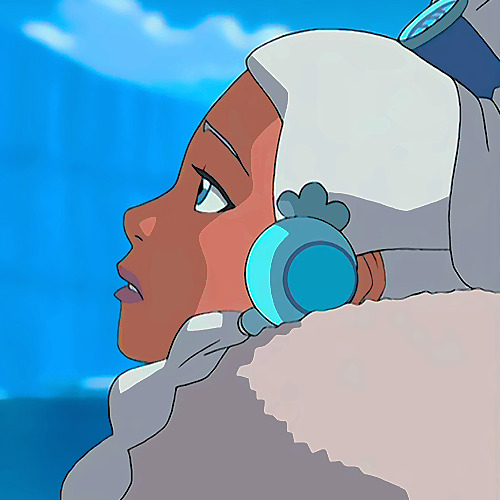
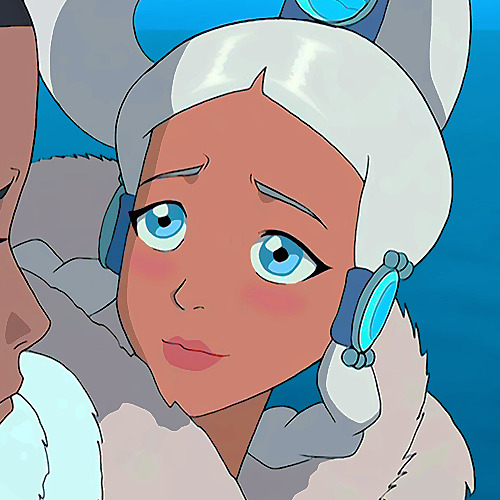
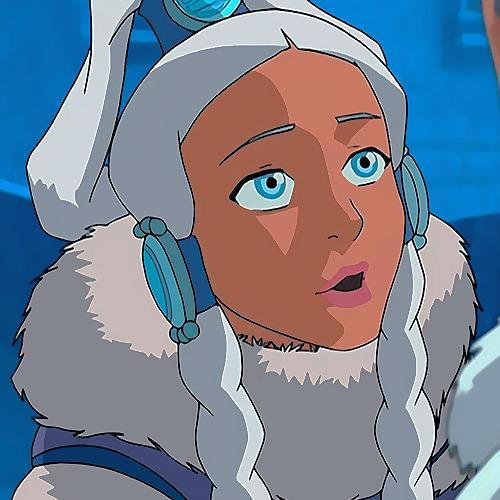
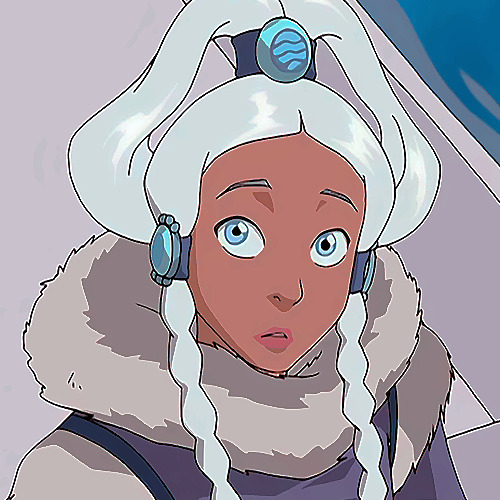
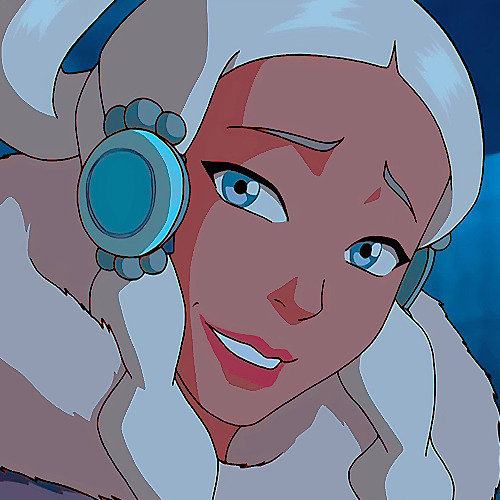
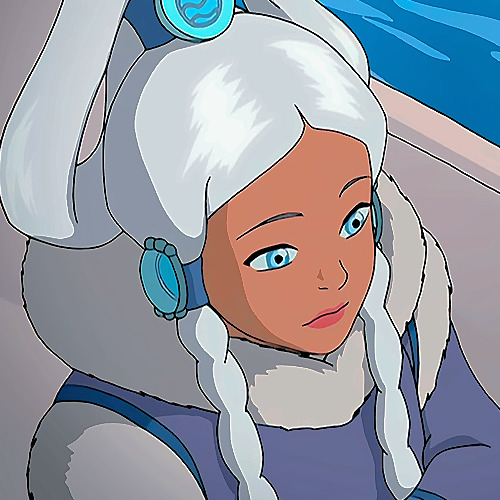
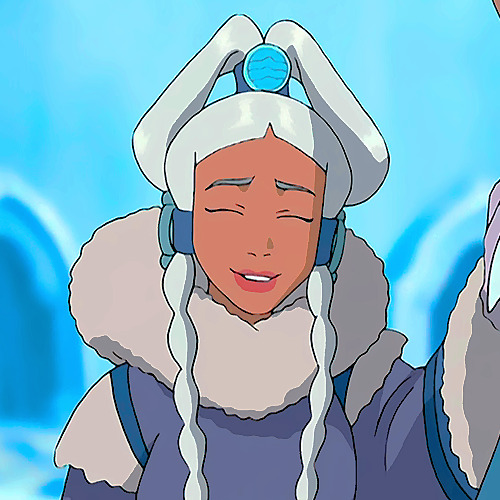
don’t repost anything, like/reblog! ♡
1K notes
·
View notes